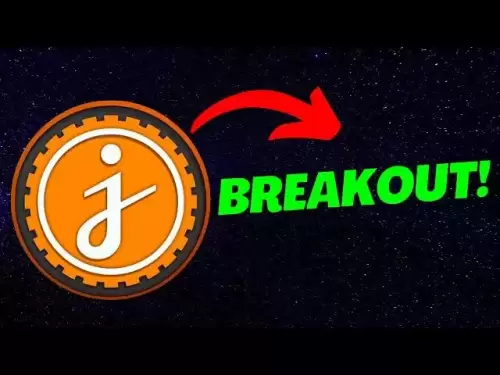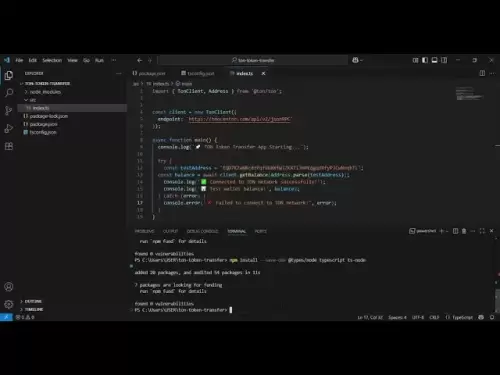-
 Bitcoin
Bitcoin $118,841.1054
1.02% -
 Ethereum
Ethereum $3,364.2689
7.44% -
 XRP
XRP $3.0337
3.93% -
 Tether USDt
Tether USDt $1.0004
0.04% -
 BNB
BNB $708.2059
2.49% -
 Solana
Solana $173.2385
5.74% -
 USDC
USDC $0.9999
-0.01% -
 Dogecoin
Dogecoin $0.2121
6.85% -
 TRON
TRON $0.3090
2.81% -
 Cardano
Cardano $0.7628
2.25% -
 Hyperliquid
Hyperliquid $46.8391
-2.08% -
 Stellar
Stellar $0.4537
0.15% -
 Sui
Sui $3.9529
-2.88% -
 Chainlink
Chainlink $16.6414
3.72% -
 Hedera
Hedera $0.2354
1.52% -
 Bitcoin Cash
Bitcoin Cash $499.1285
0.43% -
 Avalanche
Avalanche $22.6400
0.57% -
 Shiba Inu
Shiba Inu $0.0...01438
4.88% -
 UNUS SED LEO
UNUS SED LEO $8.8507
-0.64% -
 Toncoin
Toncoin $3.1498
2.35% -
 Litecoin
Litecoin $97.4954
1.21% -
 Polkadot
Polkadot $4.1541
1.50% -
 Monero
Monero $331.4406
-1.03% -
 Pepe
Pepe $0.0...01350
5.24% -
 Uniswap
Uniswap $8.9103
-5.01% -
 Bitget Token
Bitget Token $4.7540
4.51% -
 Dai
Dai $0.9999
-0.02% -
 Ethena USDe
Ethena USDe $1.0008
0.00% -
 Aave
Aave $322.3328
-1.63% -
 Bittensor
Bittensor $431.8026
-0.50%
How to use the API interface of Bitcoin contracts?
Master Bitcoin contract APIs by understanding contract basics, choosing a reputable provider (considering REST vs. WebSocket), securely authenticating, making API calls for trading & balance checks, handling responses, and implementing robust security practices.
Mar 23, 2025 at 05:49 pm
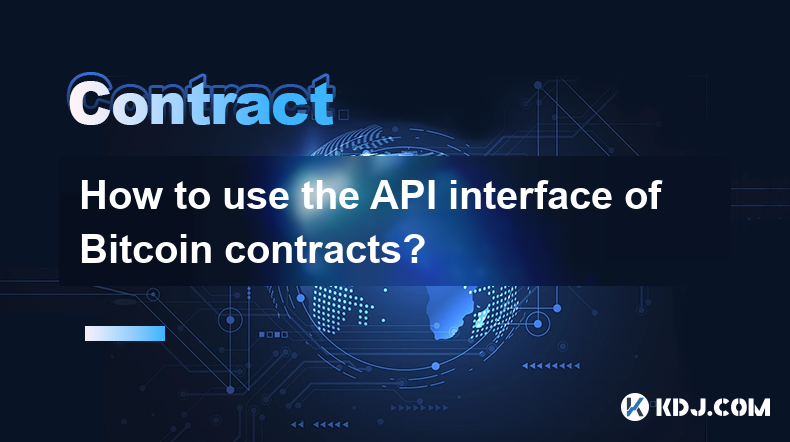
Key Points:
- Understanding the basics of Bitcoin contracts and APIs.
- Identifying reputable Bitcoin contract API providers.
- Choosing the right API for your needs (e.g., WebSocket vs. REST).
- Authentication and authorization with the API.
- Making API calls for various contract functions (e.g., placing orders, checking balances).
- Handling API responses and error codes.
- Implementing security best practices for API usage.
- Utilizing API documentation and support resources.
How to Use the API Interface of Bitcoin Contracts?
Bitcoin contract trading offers leveraged exposure to Bitcoin's price movements, enabling potentially higher profits but also increased risk. Accessing and utilizing these contracts often involves interacting with Application Programming Interfaces (APIs). This article details how to effectively leverage Bitcoin contract APIs.
Understanding Bitcoin Contract APIs
Before diving into API usage, it's crucial to understand what Bitcoin contracts are and how APIs facilitate their interaction. Bitcoin contracts are derivative instruments that track the price of Bitcoin. APIs provide programmatic access to contract trading platforms, automating tasks like order placement, position management, and data retrieval. This automation is critical for algorithmic trading strategies.
Choosing a Reputable API Provider
Selecting a reliable API provider is paramount. Look for platforms with a strong track record, robust security measures, and comprehensive documentation. Consider factors like trading volume, uptime, and the level of customer support offered. Review user feedback and independent audits to gauge the platform's trustworthiness. Avoid providers with questionable reputations or a history of security breaches.
API Types: REST vs. WebSocket
Two primary API types exist: REST (Representational State Transfer) and WebSocket. REST APIs are suitable for infrequent data requests, like checking account balances or placing individual trades. WebSockets, conversely, are designed for real-time data streaming, essential for high-frequency trading strategies that demand constant price updates and market data. The choice depends on your trading strategy's needs.
Authentication and Authorization
Accessing a Bitcoin contract API requires authentication. This typically involves obtaining API keys from the exchange. These keys grant access and must be treated as highly sensitive information. Securely store them offline and never share them with unauthorized individuals. Many platforms implement multi-factor authentication (MFA) for an added layer of security. Always enable this feature.
Making API Calls: Placing Orders
Once authenticated, you can make API calls. Placing an order usually involves sending a request containing details like the contract's symbol, order type (e.g., limit, market), quantity, and price. The specific format of this request will depend on the API documentation provided by your chosen platform. Carefully review the documentation to ensure correct formatting and parameter values to prevent errors.
Making API Calls: Checking Balances and Positions
Retrieving your account balance and open positions is also done via API calls. These calls typically return JSON (JavaScript Object Notation) or XML (Extensible Markup Language) formatted data. You'll need to parse this data to extract the relevant information. Regularly checking your balance and positions helps maintain awareness of your trading activity and risk exposure.
Handling API Responses and Error Codes
APIs return responses indicating the success or failure of your requests. Success responses contain the requested data. Failure responses include error codes that help diagnose the problem. Understanding these codes is crucial for troubleshooting. Proper error handling is essential to prevent your trading bot from crashing or making unintended actions. Always check the response status codes and handle errors gracefully.
Security Best Practices
Prioritize security. Use secure coding practices to prevent vulnerabilities. Never expose your API keys directly in your code; use environment variables instead. Implement rate limiting to prevent excessive API calls, which can lead to account suspension. Regularly update your API libraries and dependencies to patch security flaws.
API Documentation and Support
Thoroughly review the API documentation provided by your chosen platform. It outlines available endpoints, request formats, and response structures. Utilize the platform's support channels if you encounter issues. Understanding the documentation is crucial for successful API integration. Many platforms offer sample code and tutorials to guide you through the process.
Common Questions:
Q: What are the risks involved in using Bitcoin contract APIs?
A: Using APIs for Bitcoin contracts carries the same risks as manual trading, amplified by the potential for automated errors. Improperly configured bots can lead to significant financial losses. Security breaches compromising your API keys can also result in account compromise and theft.
Q: Are there free Bitcoin contract APIs?
A: Most reputable platforms offering Bitcoin contract trading require API access subscriptions or charge fees based on usage. Free APIs may exist but are often limited in functionality or less reliable.
Q: How do I choose the right API key for my needs?
A: Most platforms offer different API key types with varying permissions. Select the key with the minimum necessary permissions to reduce the risk of unauthorized access. Consider the trade-off between functionality and security when selecting your API keys.
Q: What programming languages are compatible with Bitcoin contract APIs?
A: Most major programming languages (Python, JavaScript, Java, C++) have libraries and frameworks for interacting with REST and WebSocket APIs. The choice of language depends on your familiarity and the available resources.
Q: What happens if my API connection is interrupted?
A: An interrupted connection can lead to missed trading opportunities or incomplete transactions. Robust error handling and connection retry mechanisms are crucial for mitigating the impact of connection interruptions. Consider using WebSocket APIs for continuous connection and real-time data.
Disclaimer:info@kdj.com
The information provided is not trading advice. kdj.com does not assume any responsibility for any investments made based on the information provided in this article. Cryptocurrencies are highly volatile and it is highly recommended that you invest with caution after thorough research!
If you believe that the content used on this website infringes your copyright, please contact us immediately (info@kdj.com) and we will delete it promptly.
- Trump, Meme Coins, and Tokens: A Wild Ride in Crypto
- 2025-07-17 18:50:12
- Ripple's EU Expansion: RLUSD Takes Center Stage, XRP's Role Defined
- 2025-07-17 18:30:12
- XRP Whale Alert: $73M Moved to Coinbase – Correction Incoming?
- 2025-07-17 19:10:14
- Sui (SUI), Mutuum Finance (MUTM), and DeFi Adoption: A Tale of Two Trajectories
- 2025-07-17 19:10:14
- Shiba Inu's ATH Ambitions: Can It Outpace the Competitors?
- 2025-07-17 18:30:12
- Cake Wallet, Privacy, and the Harper v. Faulkender Ruling: What You Need to Know
- 2025-07-17 18:50:12
Related knowledge
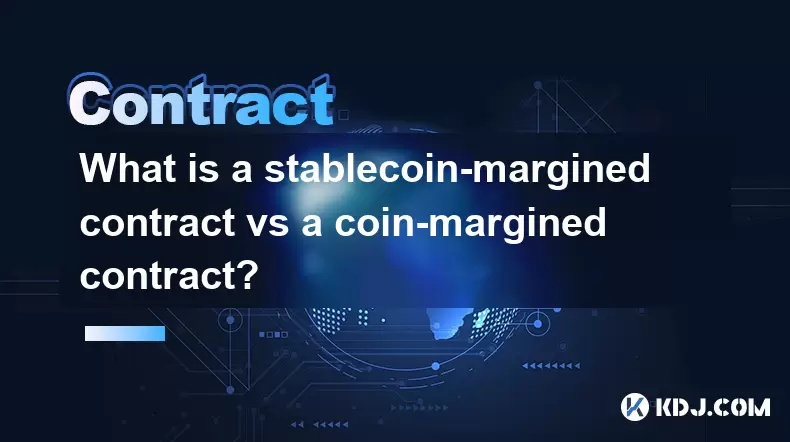
What is a stablecoin-margined contract vs a coin-margined contract?
Jul 15,2025 at 06:36pm
Understanding the Difference Between Stablecoin-Margined Contracts and Coin-Margined ContractsIn the world of cryptocurrency derivatives, margin plays...

How to analyze volume profile for Bitcoin futures?
Jul 17,2025 at 01:21am
Understanding Volume Profile in Bitcoin Futures TradingVolume profile is a crucial analytical tool used by traders to assess the distribution of tradi...

How to backtest a Bitcoin futures trading strategy?
Jul 15,2025 at 11:35am
Understanding Bitcoin Futures TradingBitcoin futures trading involves contracts to buy or sell Bitcoin at a predetermined price and date in the future...
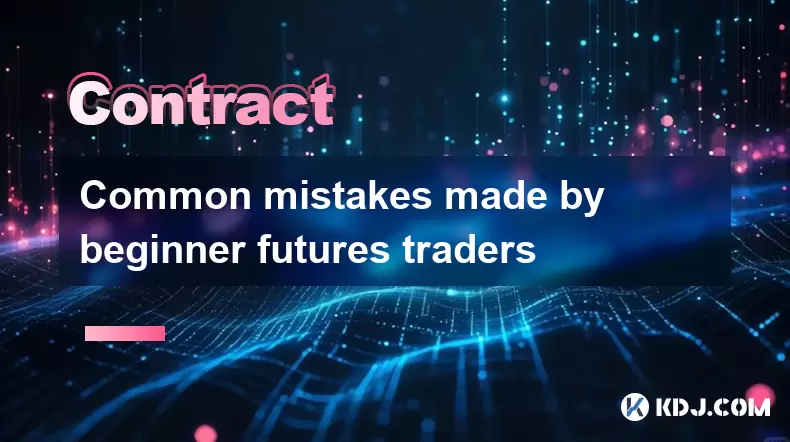
Common mistakes made by beginner futures traders
Jul 17,2025 at 07:49am
Overleveraging Without Understanding the RisksOne of the most frequent mistakes made by beginner futures traders is overleveraging their positions. Fu...

Psychology of trading Bitcoin contracts
Jul 13,2025 at 02:50am
Understanding the Emotional Rollercoaster of Bitcoin Futures TradingBitcoin contract trading, especially in the form of futures, introduces a high lev...
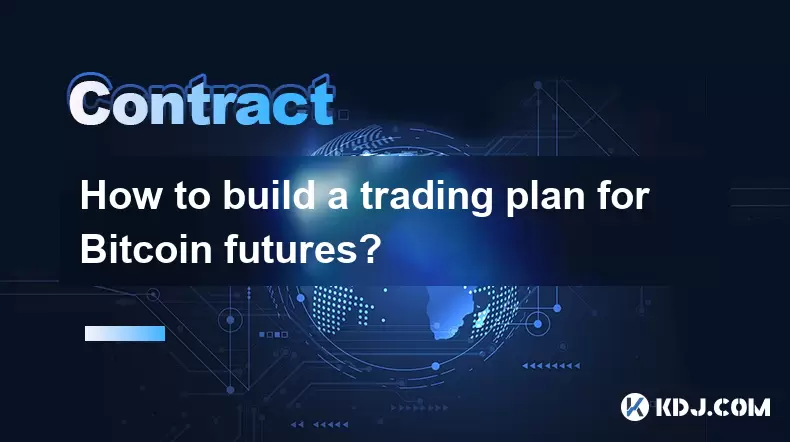
How to build a trading plan for Bitcoin futures?
Jul 17,2025 at 08:42am
Understanding Bitcoin Futures TradingBitcoin futures are derivative contracts that allow traders to speculate on the future price of Bitcoin without o...

What is a stablecoin-margined contract vs a coin-margined contract?
Jul 15,2025 at 06:36pm
Understanding the Difference Between Stablecoin-Margined Contracts and Coin-Margined ContractsIn the world of cryptocurrency derivatives, margin plays...

How to analyze volume profile for Bitcoin futures?
Jul 17,2025 at 01:21am
Understanding Volume Profile in Bitcoin Futures TradingVolume profile is a crucial analytical tool used by traders to assess the distribution of tradi...

How to backtest a Bitcoin futures trading strategy?
Jul 15,2025 at 11:35am
Understanding Bitcoin Futures TradingBitcoin futures trading involves contracts to buy or sell Bitcoin at a predetermined price and date in the future...

Common mistakes made by beginner futures traders
Jul 17,2025 at 07:49am
Overleveraging Without Understanding the RisksOne of the most frequent mistakes made by beginner futures traders is overleveraging their positions. Fu...

Psychology of trading Bitcoin contracts
Jul 13,2025 at 02:50am
Understanding the Emotional Rollercoaster of Bitcoin Futures TradingBitcoin contract trading, especially in the form of futures, introduces a high lev...

How to build a trading plan for Bitcoin futures?
Jul 17,2025 at 08:42am
Understanding Bitcoin Futures TradingBitcoin futures are derivative contracts that allow traders to speculate on the future price of Bitcoin without o...
See all articles
























